Central midfielders are often the heartbeat of a team. They connect defense and attack, provide balance across the pitch, and influence both possession and pressing. Scouting them requires a nuanced approach, because unlike specialized pivots (the number 6) or playmakers (the number 10), these players carry key responsibilities in both directions.
When we refer to central midfielders in this article, we are not talking about holding midfielders or attacking midfielders. Instead, we mean the classic number 8s — players who operate as the shuttlers or connectors in midfield. These are the wide central midfielders in a diamond midfield, the midfielders positioned in front of the pivot in a 4-3-3, or the two advanced midfielders in a 3-5-2.
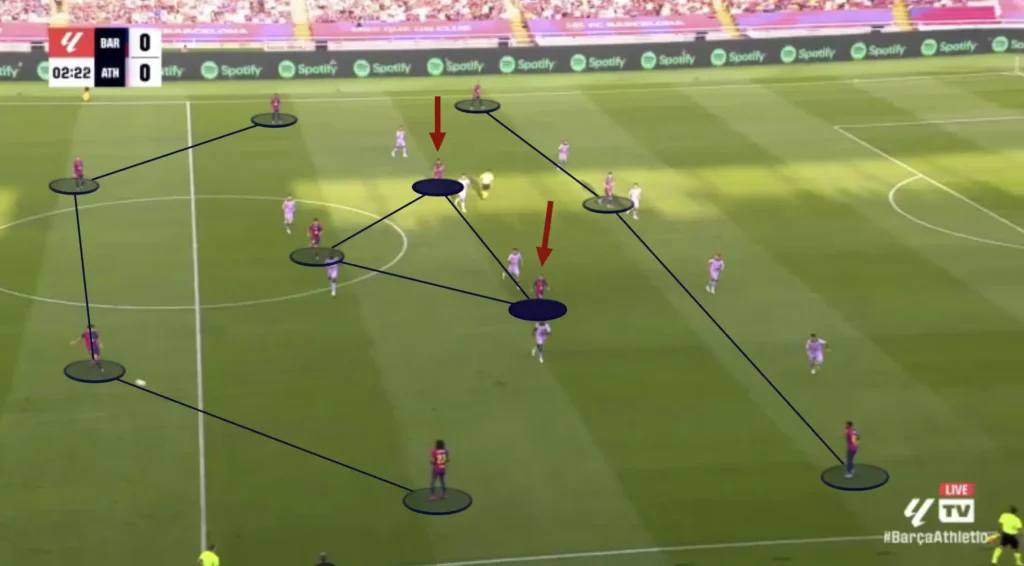
Their role is to cover ground, link phases of play, and contribute both defensively and offensively without being purely specialized in either direction.
In scouting these players, we can break down their competencies into four main areas:
- Defensive shielding – positioning, closing passing lanes, and maintaining compactness.
- Defensive recovering – covering larger spaces and pressing to force turnovers.
- Contribution to the build-up – dropping to receive, showing press resistance, and progressing play.
- Contribution to chance creation – creating chances for others or arriving in goal-scoring positions.
Defensive Shielding
The first task of any number 8 is to ensure midfield compactness without the ball. Unlike a pure holding midfielder, who anchors the structure, the number 8 works to close passing lanes into opposition attackers and support teammates by maintaining the right distances.
A well-scouted central midfielder will:
- Stay connected to the pivot and backline, avoiding large vertical gaps.
- Angle their body to block access into dangerous zones, particularly between the lines.
- Anticipate when to step up to press versus when to hold position.
A practical example: when defending, the number 8 often has to shield the half-space, preventing passes into attacking midfielders. Their positioning dictates whether the backline becomes exposed or stays protected.
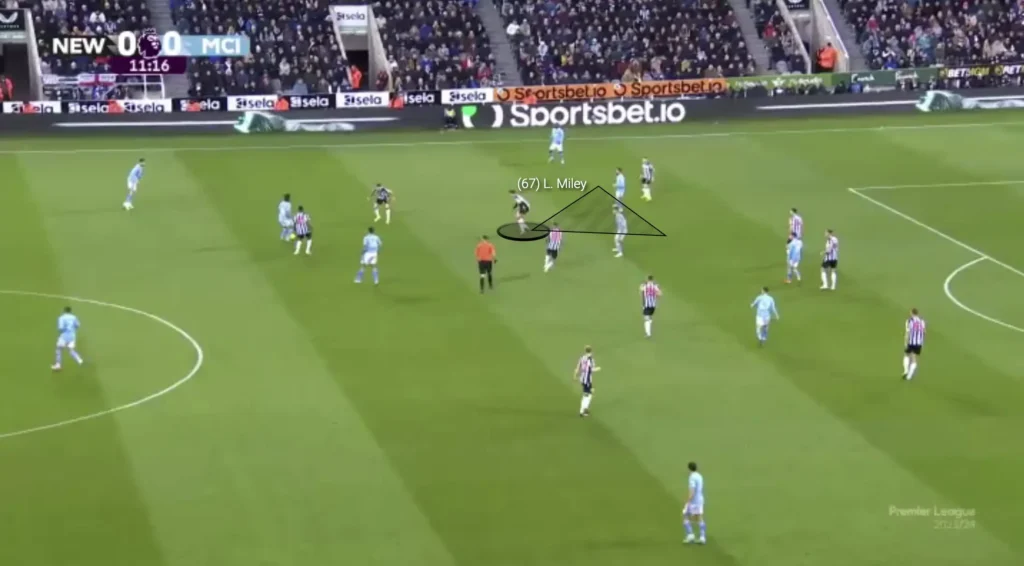
For scouts, this means looking not only at how often a player makes tackles or interceptions, but also how their positional awareness prevents passes from even being attempted.
Defensive Recovering
Modern central midfielders are required to defend big spaces. When the press is bypassed or the team loses the ball, number 8s often sprint back to protect the back line or engage the opponent in transition.
Key competencies include:
- Pressing intensity – closing down opponents quickly to disrupt their rhythm.
- Defensive running – covering long distances to recover into shape.
- 1v1 dueling – being able to challenge opponents in open spaces without immediate cover.
For example, if a team plays a high-pressing system, the number 8 will often be the one chasing an opposition pivot. Their ability to press with timing and aggression determines whether the opponent builds up smoothly or is forced into an error.
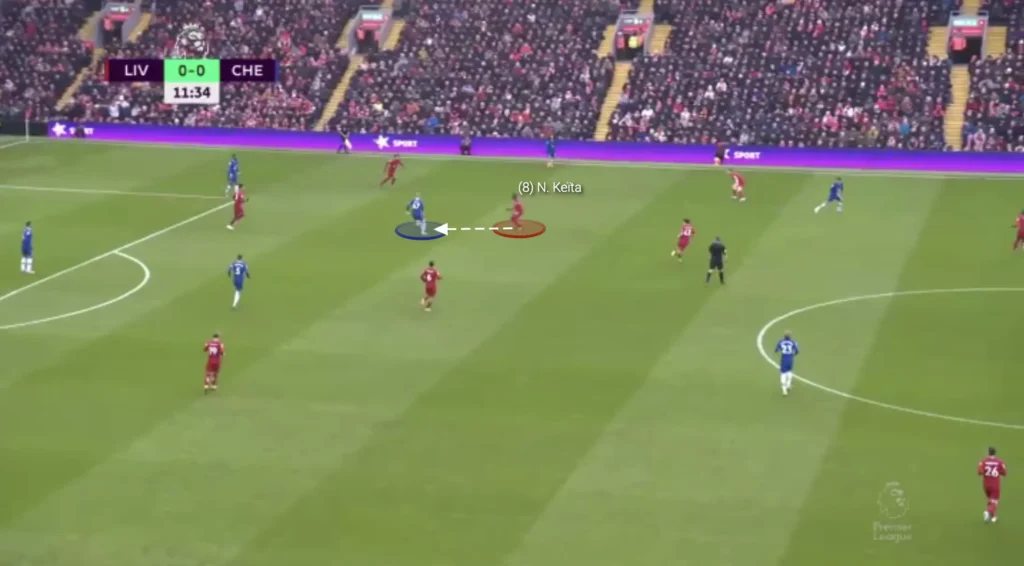
Scouts should evaluate not only the work rate but also the efficiency of pressing actions — whether the midfielder presses with the right angles and forces play into favorable zones for the team.
Contribution to the Build-Up
In possession, number 8s are vital connectors. They often drop closer to the pivot in early build-up, offering angles to bypass pressure, but they must also be capable of receiving under pressure in tighter midfield zones.
A complete central midfielder contributes by:
- Offering themselves between the lines or deeper to progress play.
- Showing press resistance — using body orientation, close control, and scanning to play out of tight spaces.
- Executing progressive passes, switches, or carrying the ball to break opposition lines.
For instance, against a low-block, the 8 may position themselves deeper, looking to receive and immediately play a progressive pass into a dropping forward, linking midfield to attack and breaking the opponent’s compact shape.
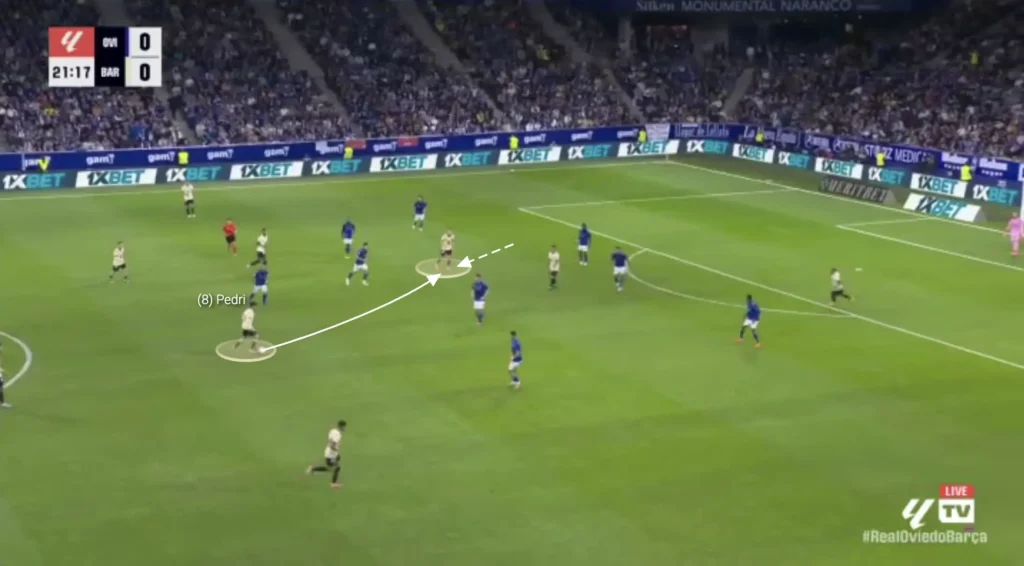
Scouts should look at how a player adapts to different build-up scenarios: does he only contribute in low build-up, or can he also play a decisive role higher up the pitch?
Contribution to Chance Creation
Finally, the number 8’s offensive value is judged by how they help generate goalscoring opportunities. While not always the primary playmaker, their movements and decision-making often dictate attacking success.
Competencies include:
- Progressive passing – playing into runners in behind or switching play to isolate wingers.
- Combination play – linking with attackers in the half-space through quick passes or underlaps.
- Timing runs into the box – arriving late to attack cut-backs or second balls.
- Creating overloads – supporting wingers and fullbacks to break defensive lines.
For example, Pedri’s ability to arrive in the final third to play light through-balls is a perfect illustration of a number 8 contributing to chance creation.
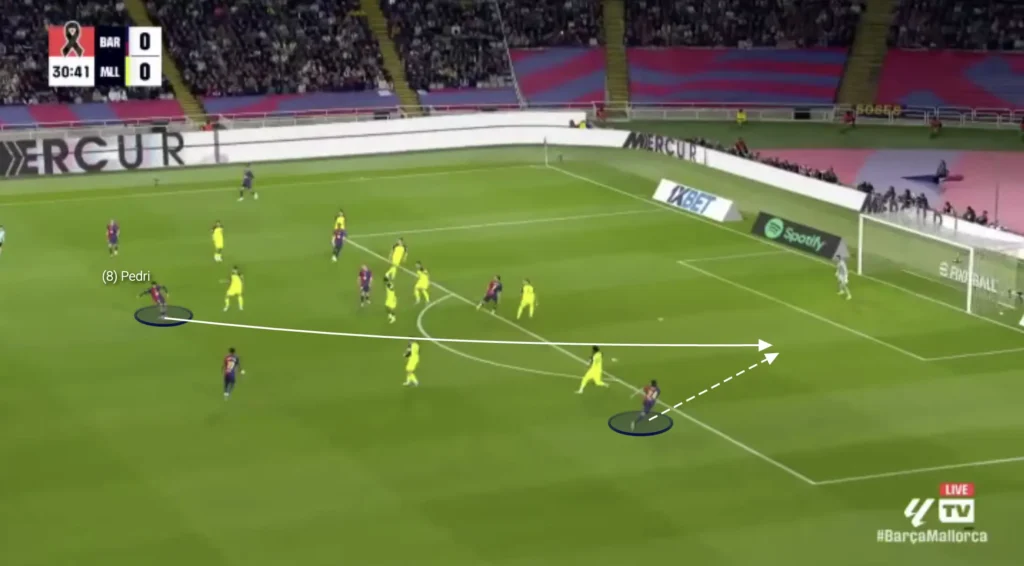
Others, like Ilkay Gündogan, excel at delayed runs into the box, capitalizing on disorganized defenses.
When scouting, the question is: does the player influence the game closer to goal? A midfielder who only circulates possession but never contributes to chance creation may not provide the complete offensive package.
Conclusion
Scouting central midfielders is about recognizing their hybrid responsibilities. These players are neither purely defensive anchors nor pure creators — they are the connectors, the shuttlers, the number 8s who ensure balance across phases of play.
To evaluate them like a pro, focus on four areas:
- Defensive shielding – do they position intelligently to protect the team structure?
- Defensive recovering – can they defend larger spaces and press effectively?
- Contribution to the build-up – are they press-resistant and capable of progressing play?
- Contribution to chance creation – do they add real value in the final third, through passing or runs?
By breaking analysis into these competencies, scouts and analysts can separate good midfielders from great ones — identifying not just who keeps play ticking, but who can thrive in demanding tactical systems at the highest level.
